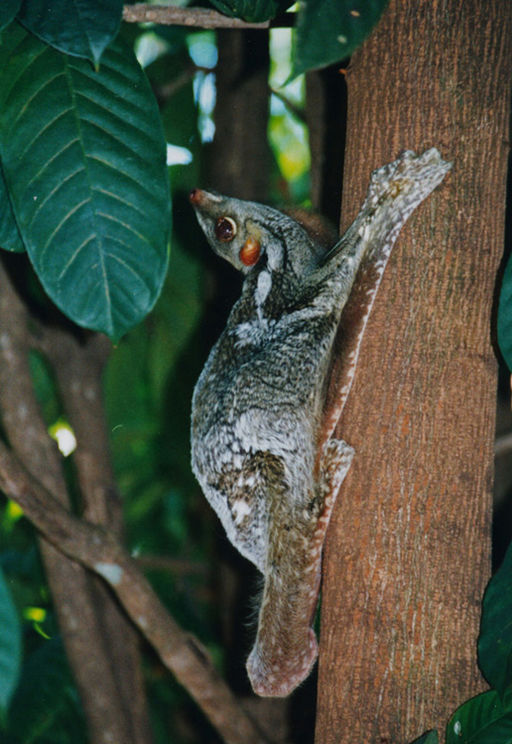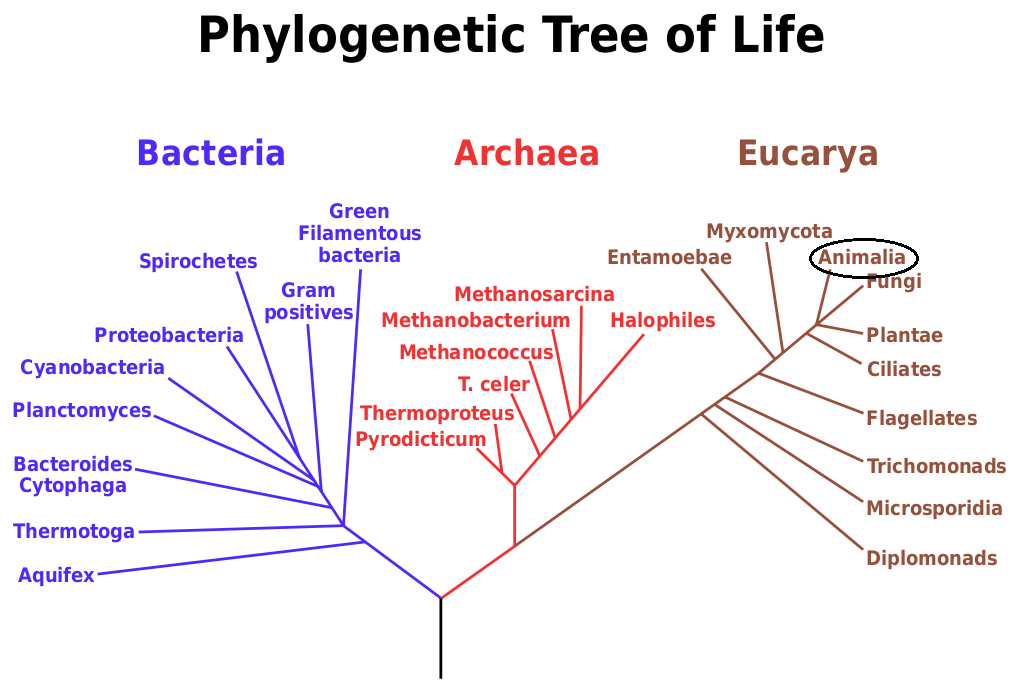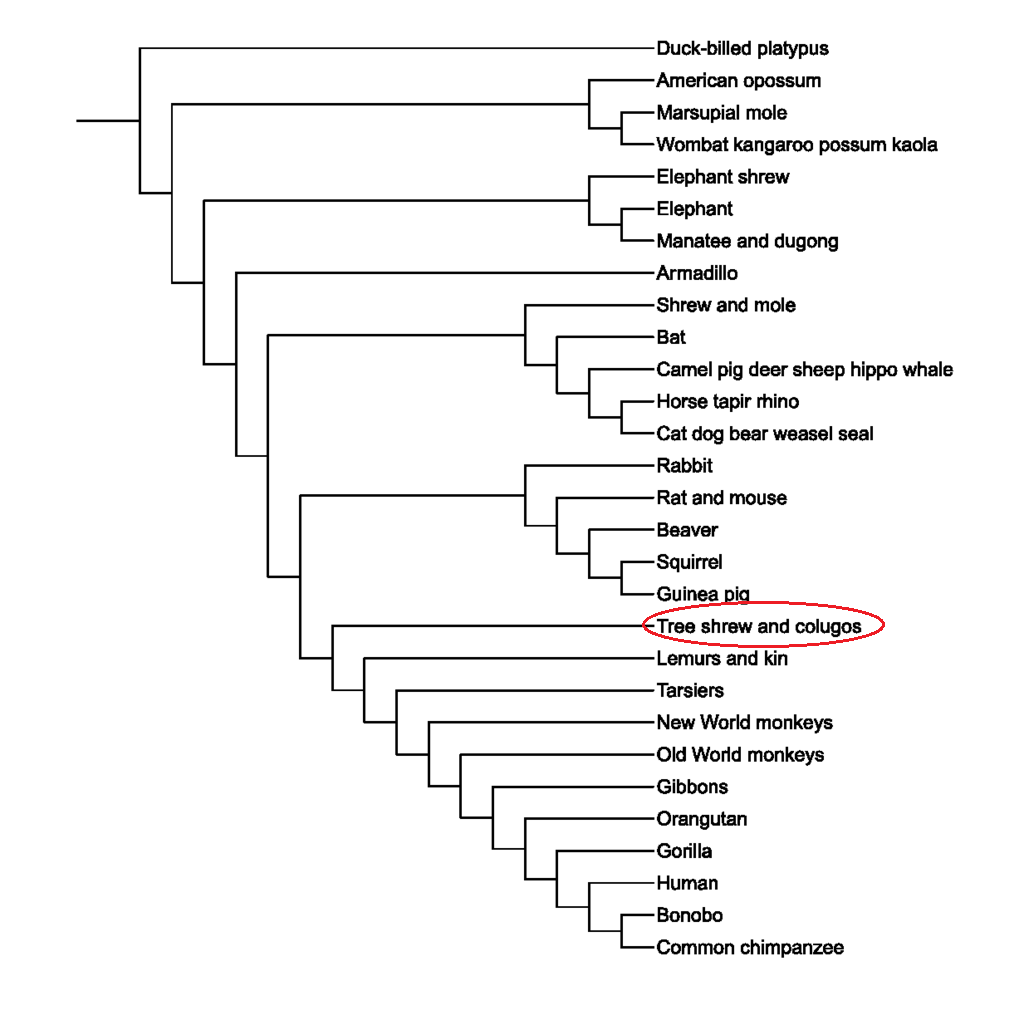Classification of the
Galeopterus variegatus!

Domain-Eukarya
Kingdom-Animalia
Phylum-Chordata
Class-Mammalia
Order-Dermoptera
Family- Cynocephalidae
Genus- Galeopterus
Species- Galeopterus variegatus
Domain:
All organisms belong to one of three domains: Eukarya, Archea, or
Bacteria. The Galeopterus variegatus belong to the domain
Eukar ya
because they have a nucleus and membrane-bound organelles.
ya
because they have a nucleus and membrane-bound organelles.
Kingdom: Organisms classified as Animalia are all multicellular and heterotrophic. Galeopterus variegatus are multicellular organisms that cannot create their own source of food, making them fall under the Animalia kingdom! Figure 1. Phylogenetic tree of the 3 domains and kingdoms
Phylum:
Synapomorphies of the phylum Chordata include a dorsal nerve cord,
visceral clefts and arches, and possession of a notochord. Visceral
clefts are "pouches" that extend outwards of the pharynx with
adjacent tissues that are referred to as the visceral arches
(Lundberg 1995). These vary greatly among the different classes; in
the Galeopterus variegatus some of these develop into parts of the
skull including the jaw, facial muscles, and middle ear ossicles.
Notochords are stiff rod like elongated structures, not to be
confused with backbones,that become present in embryos that are
ventral to the nerve cord and help with the structure and
development of embryos (Lundberg, 1995).

Class:
The class Mammalia contains three specific structures only present
in mammals including hair, mammary glands, and three ear bones. The
Galeopterus variegatus has all of these features.
Figure 2. Phylogenetic tree of the class Mammalia
Order:
The order Dermoptera is currently referred
to as the flying lemur order. Members of the order Dermoptera are
nocturnal gliders that live in South East Asia (Marivaux et al,
2006). A main characteristic of these "flying lemurs" is a membrane
that extends from the sides of their neck to their forepaws to their
hind feet allowing them to glide (Martin, 2008). Other
characteristics include broad flat skulls and small teeth (Martin,
2008). Although Galeopterus variegatus are not
lemurs and do not fly they are still commonly
called flying lemurs!
Family: Only two extant organisms make up the family Cynocephalidae, the Galeopterus variegatus and Cynocephalus volans (Marivaux et al, 2006). As a whole they are referred to as the colugos. Out of all the Dermoptera they are the most adapted to glide with membranes that are as large as possible for their body shape (Brynes et al, 2008).
Genus & Species: The Galeopterus variegatus are called the Sundra or Malayan flying lemurs. Uniquely they are the only organism in the genus Galeopterus.
Now that we know about their classification, let’s check out their habitat
